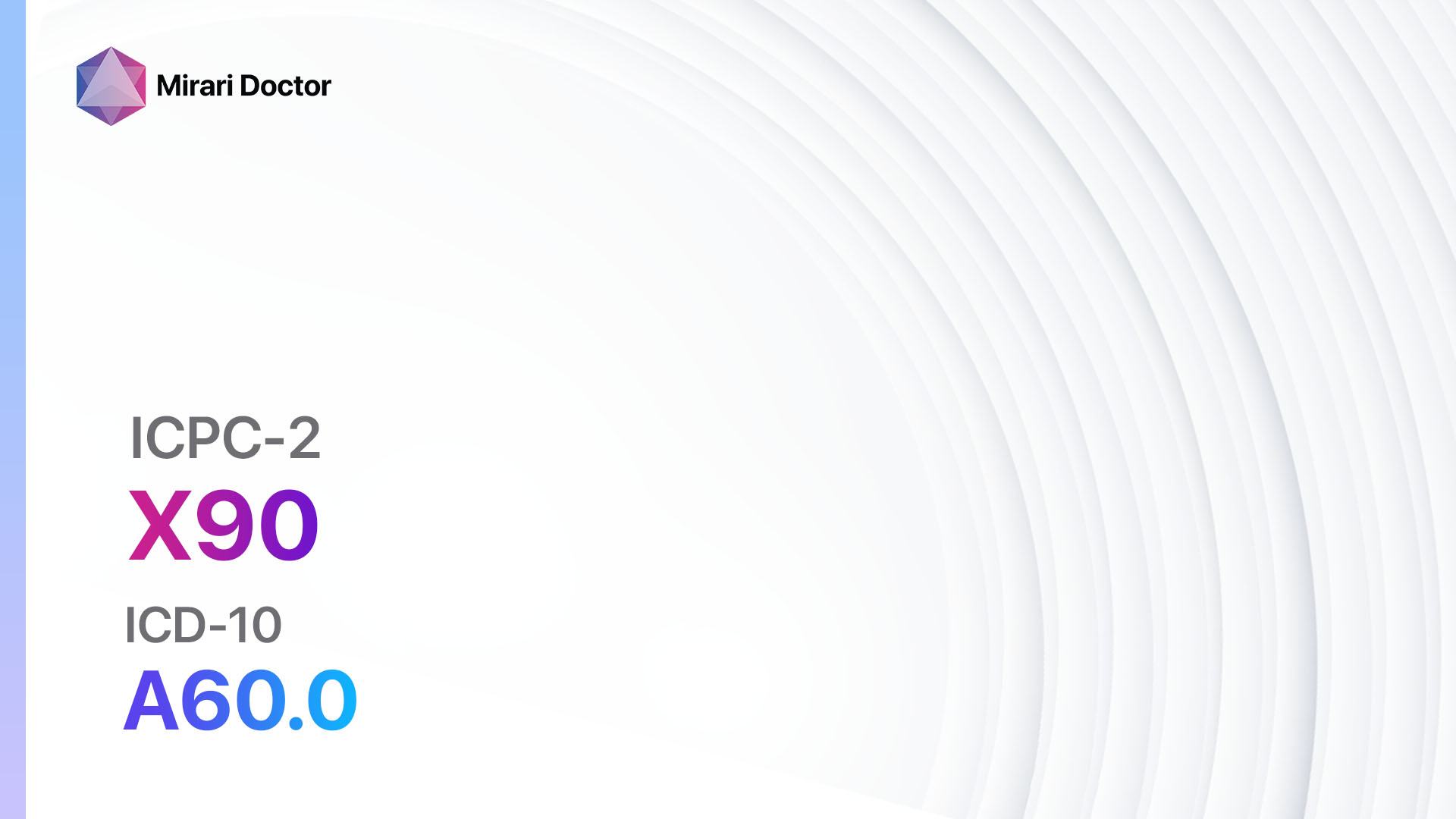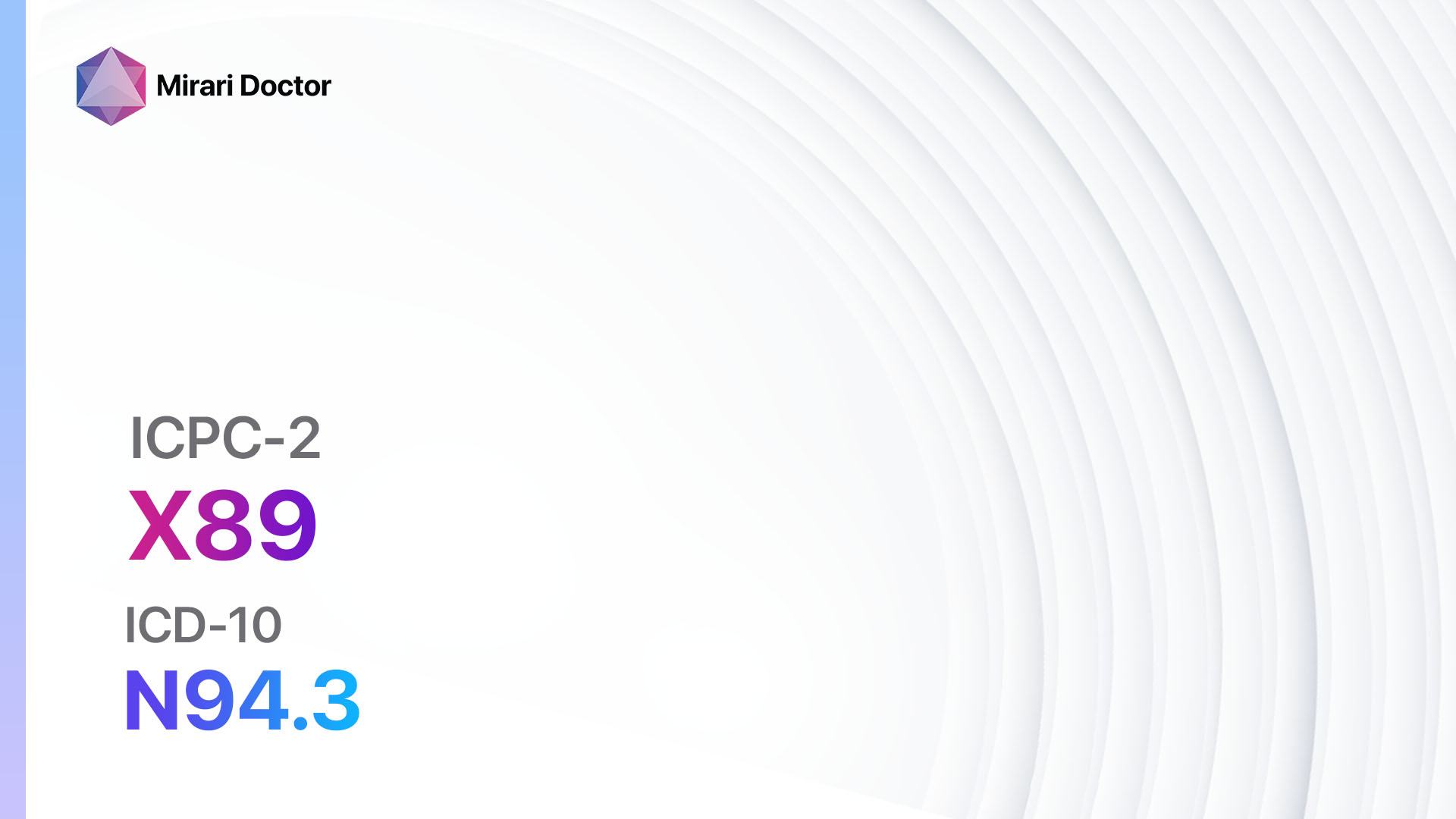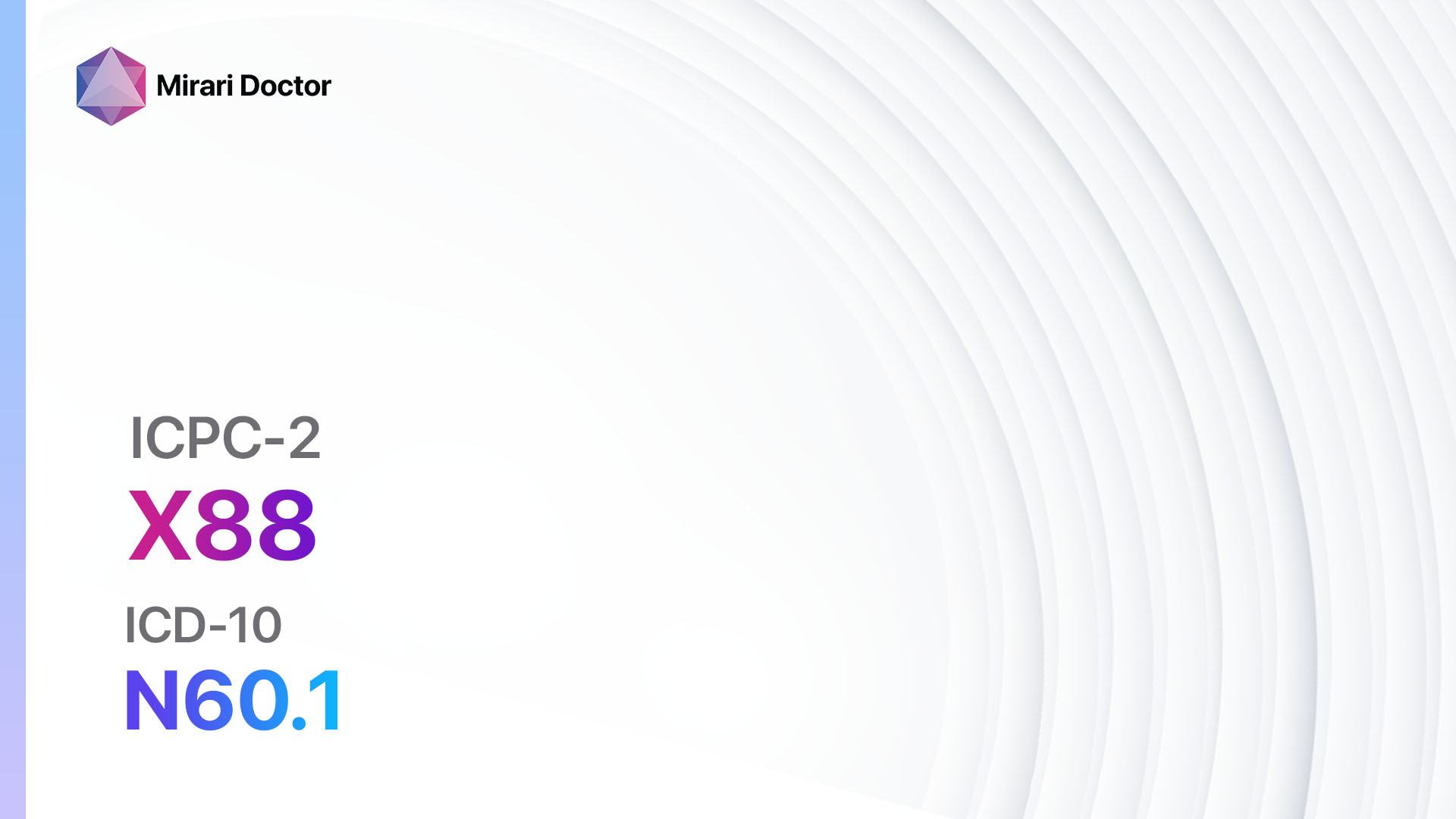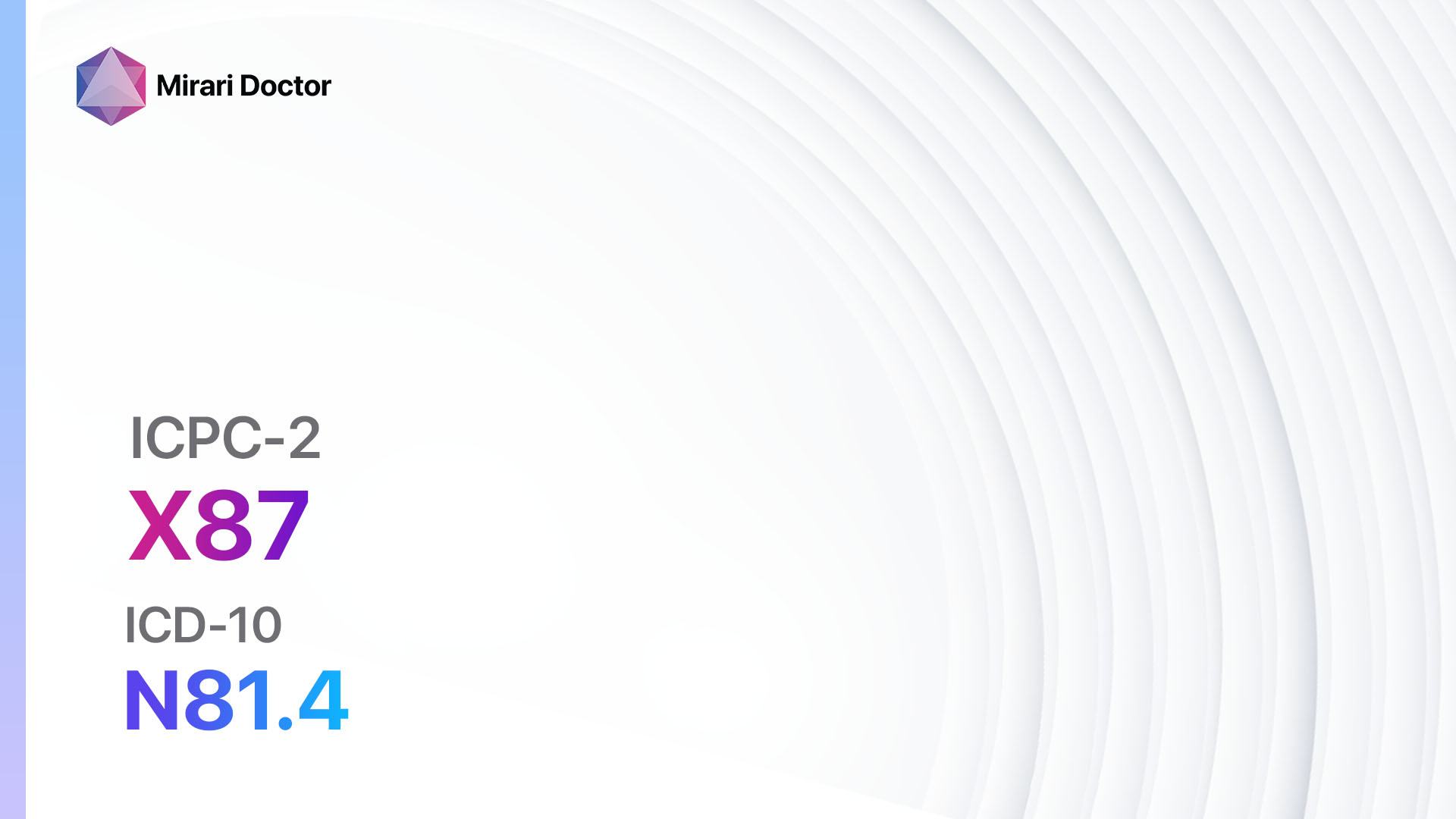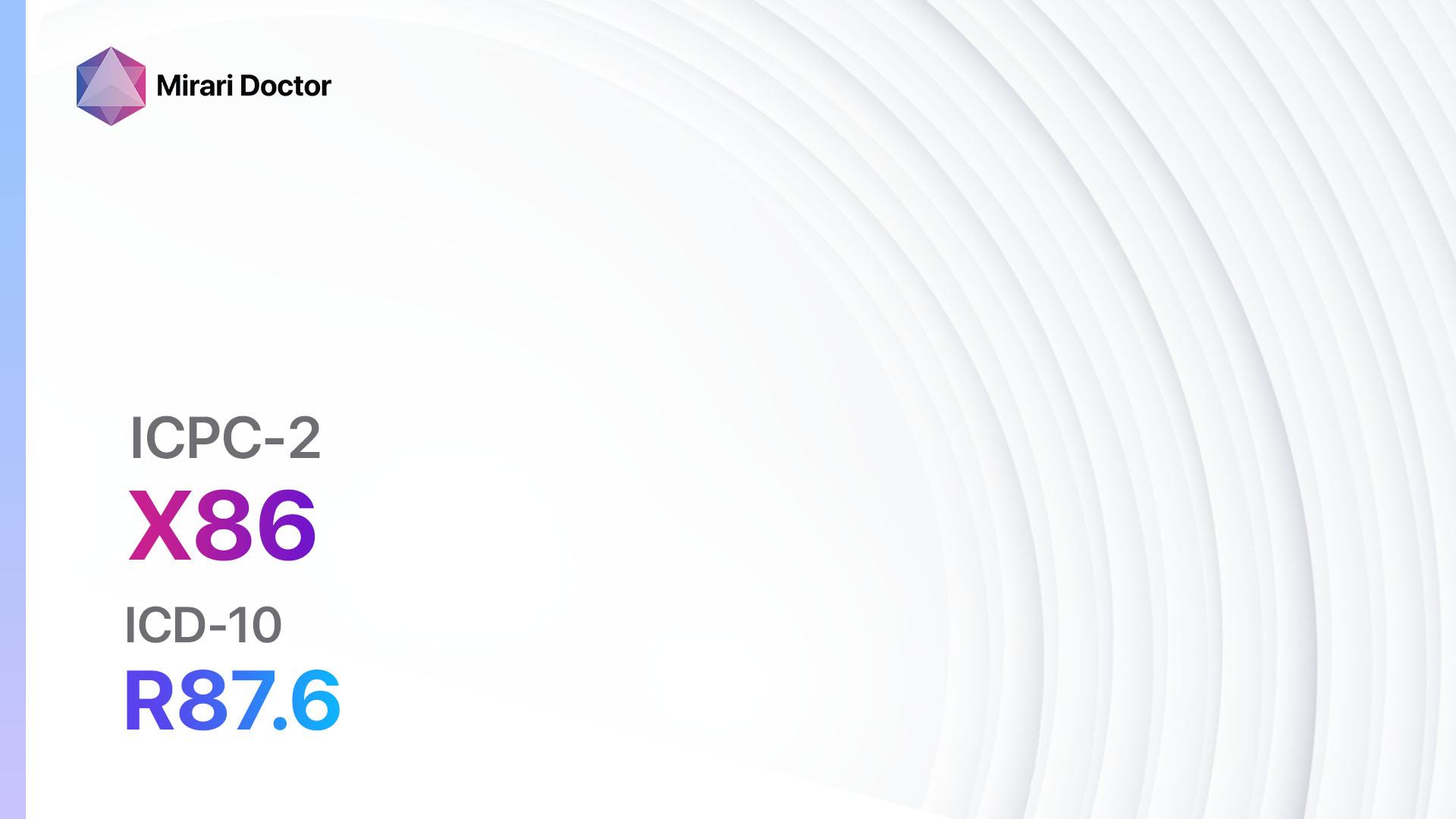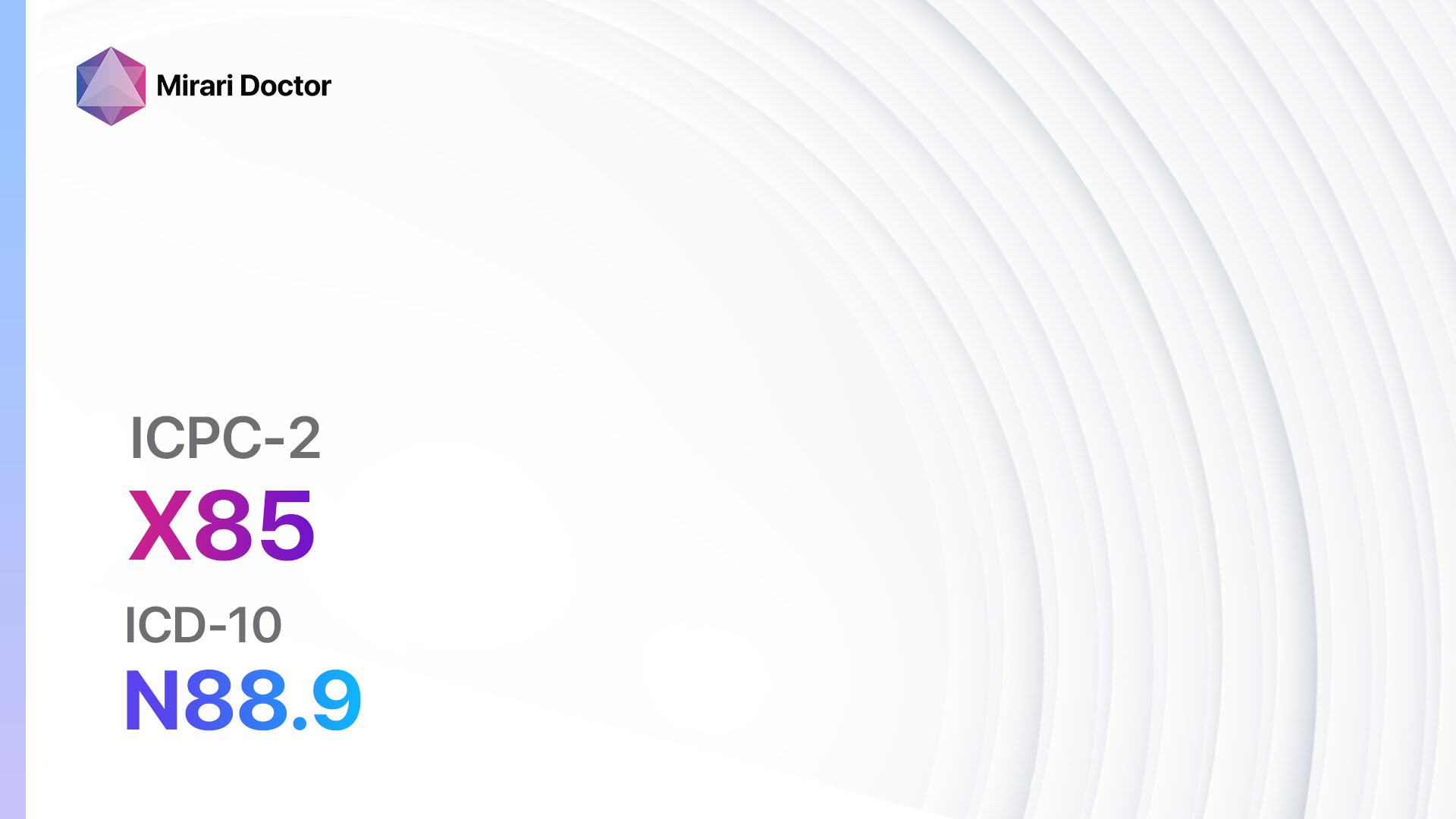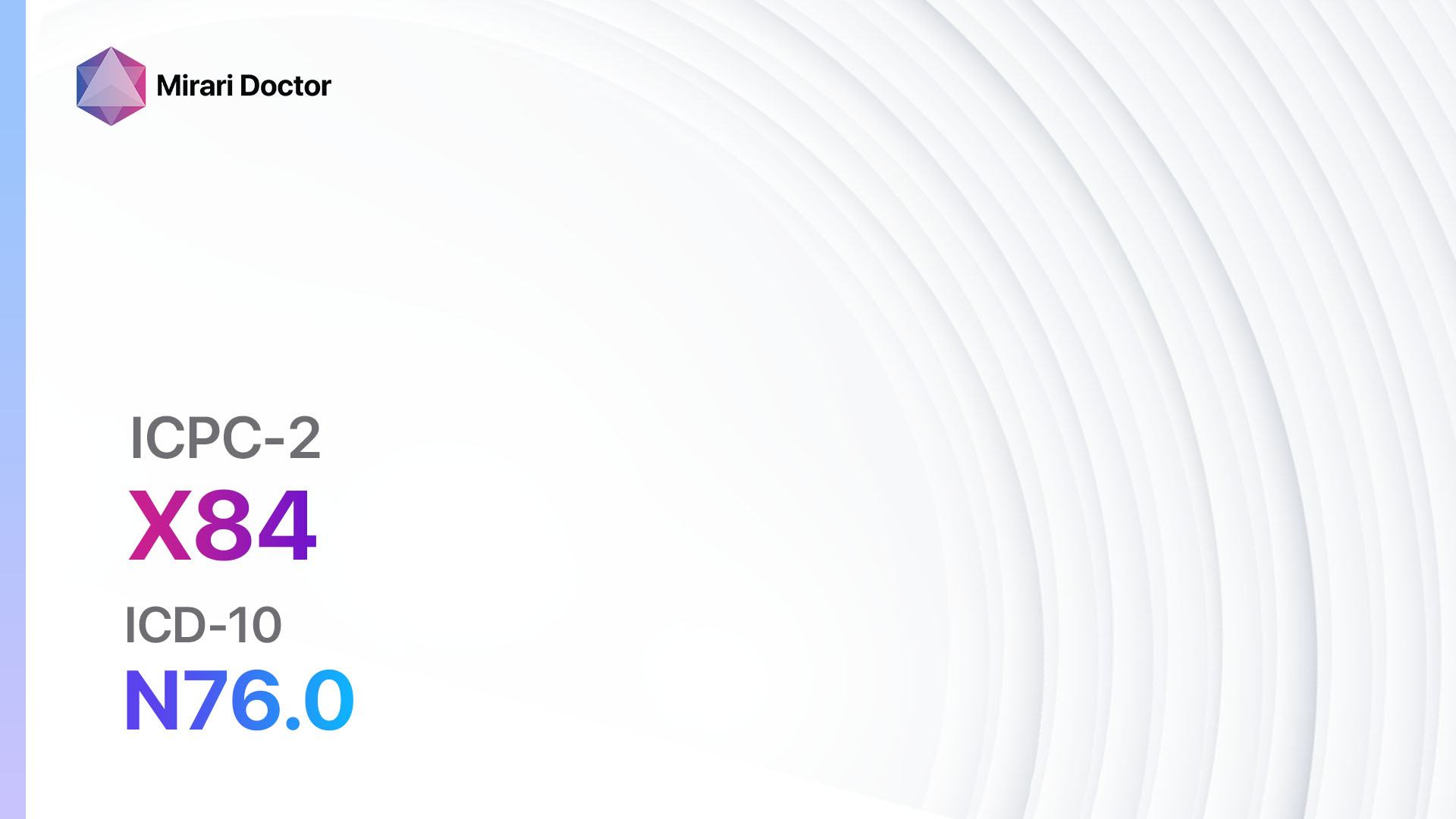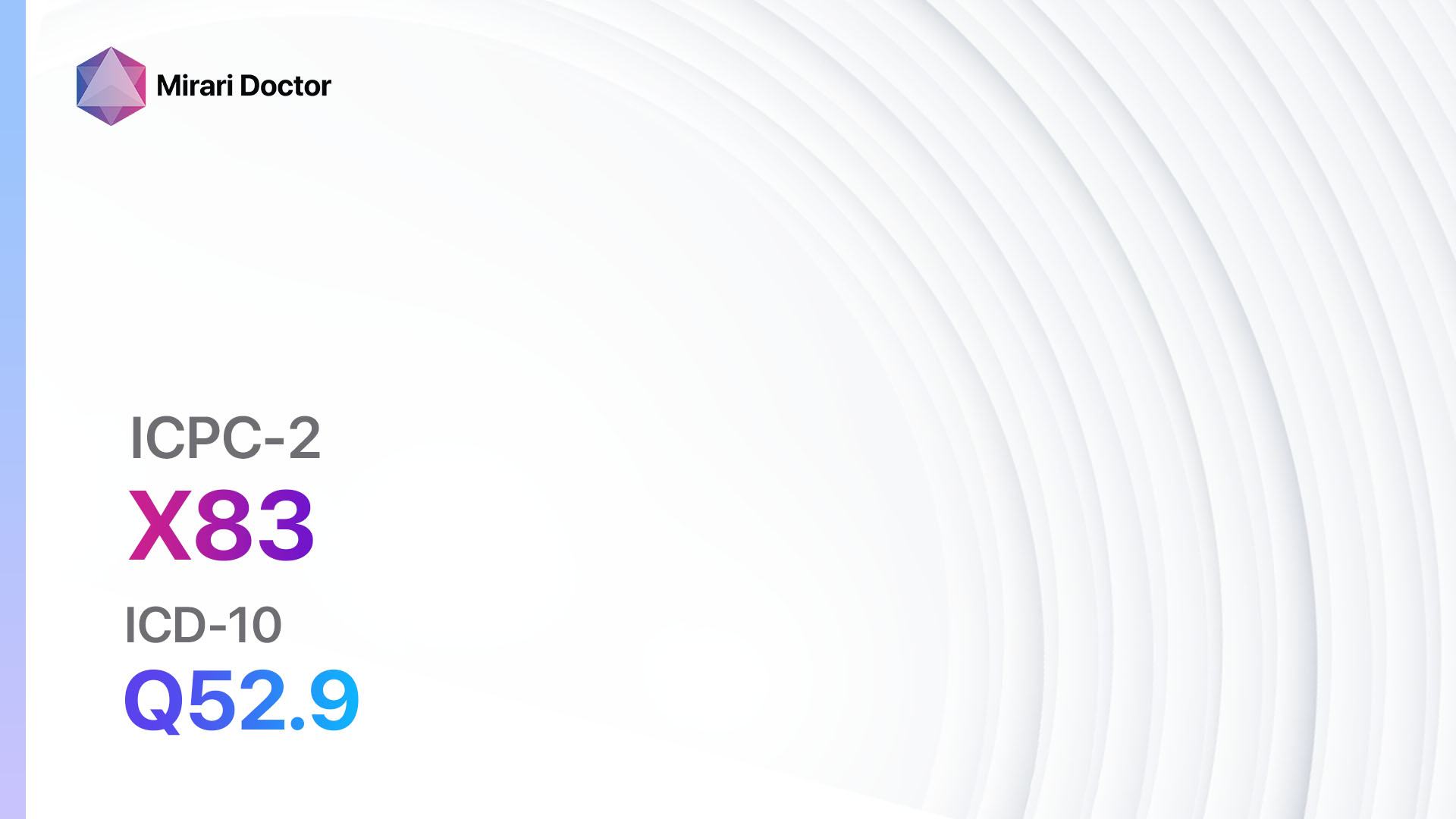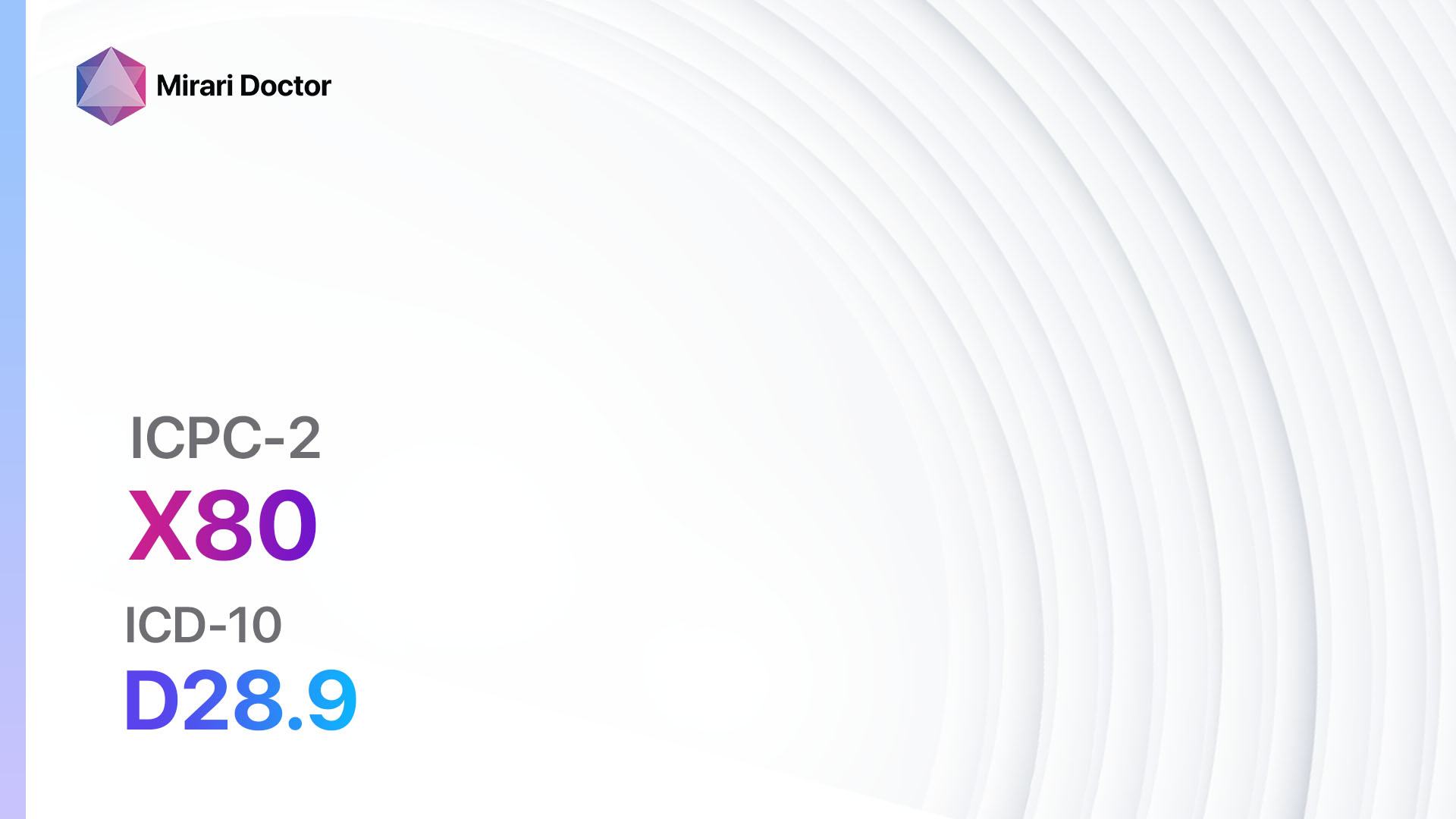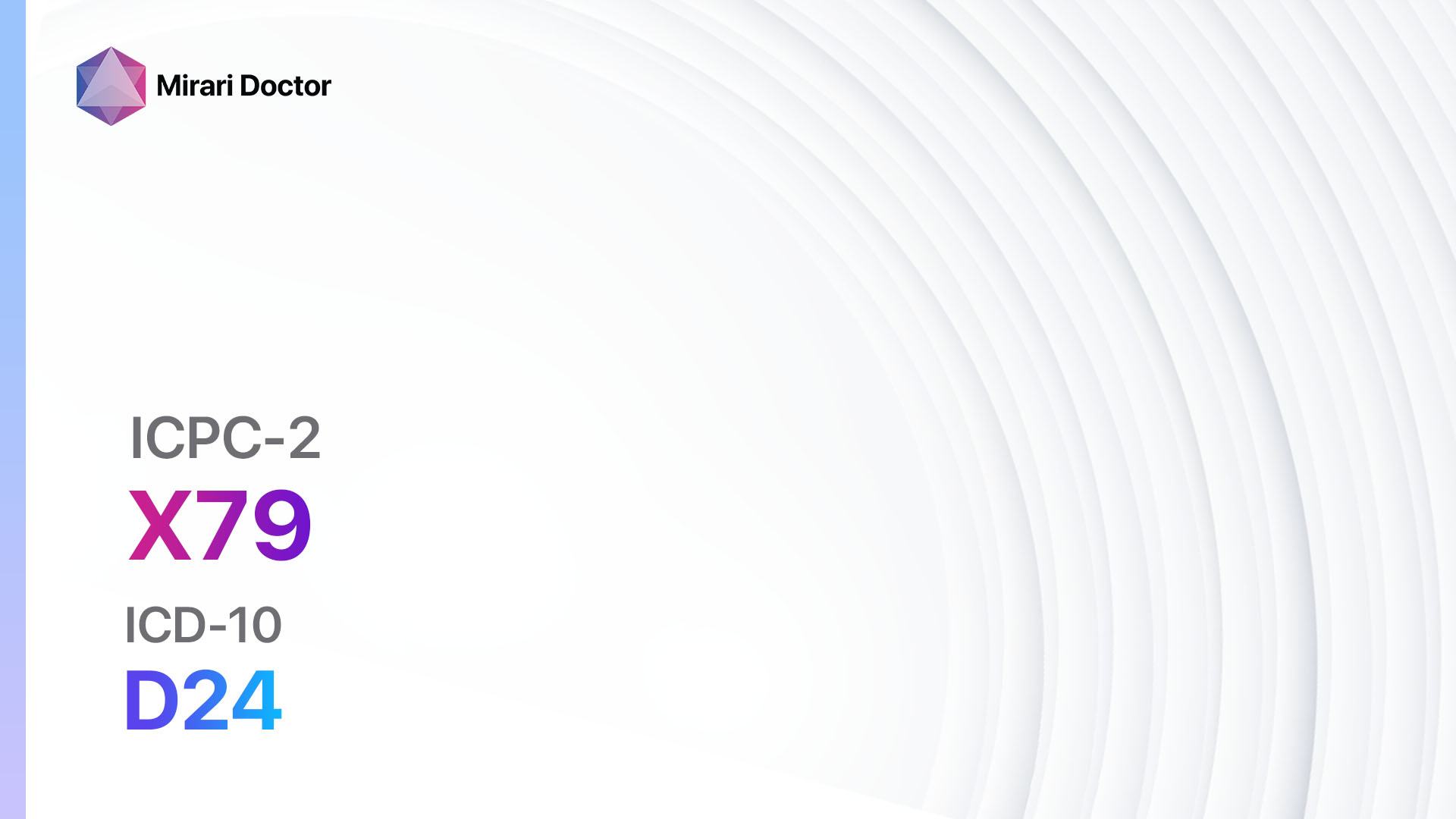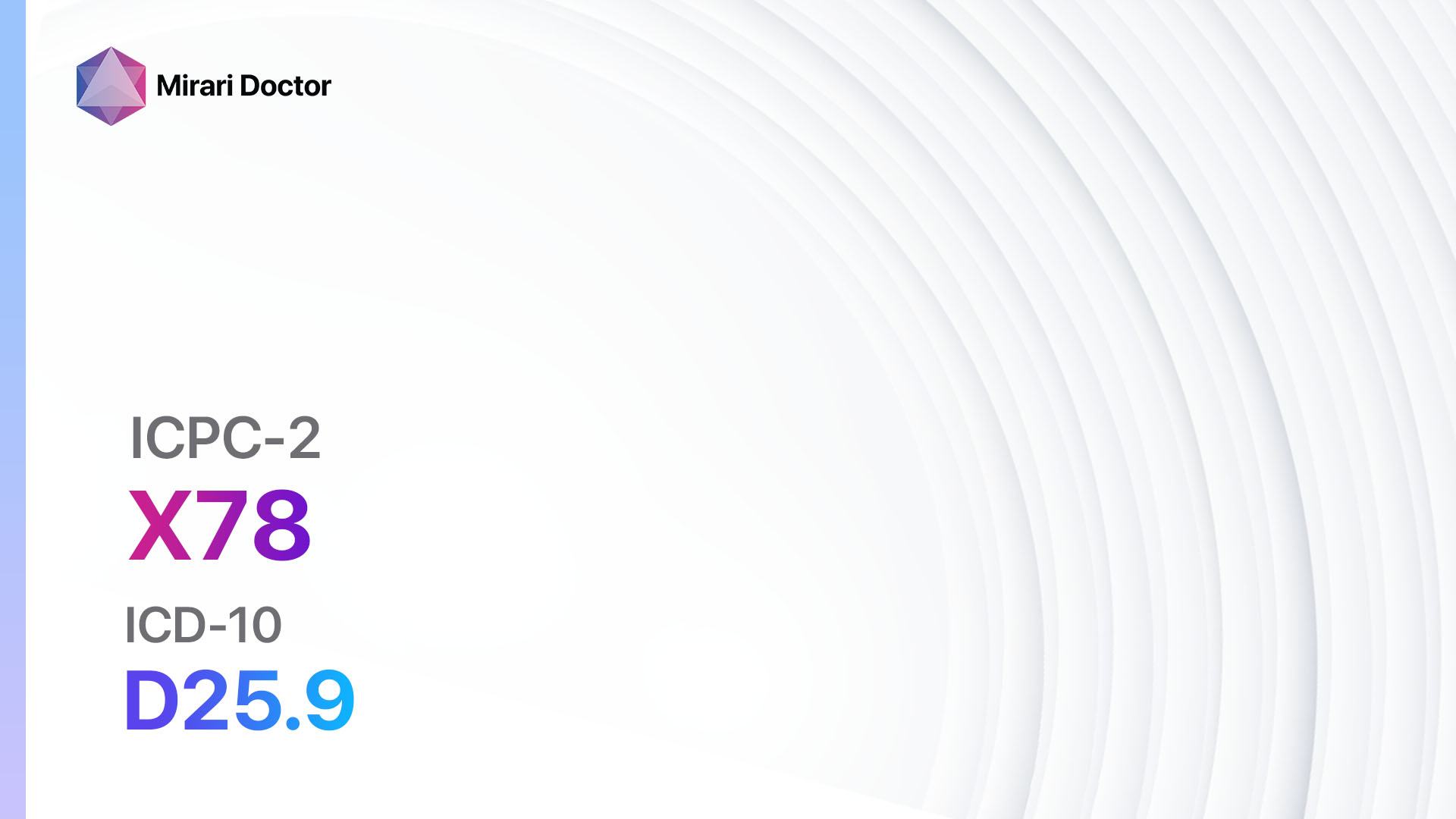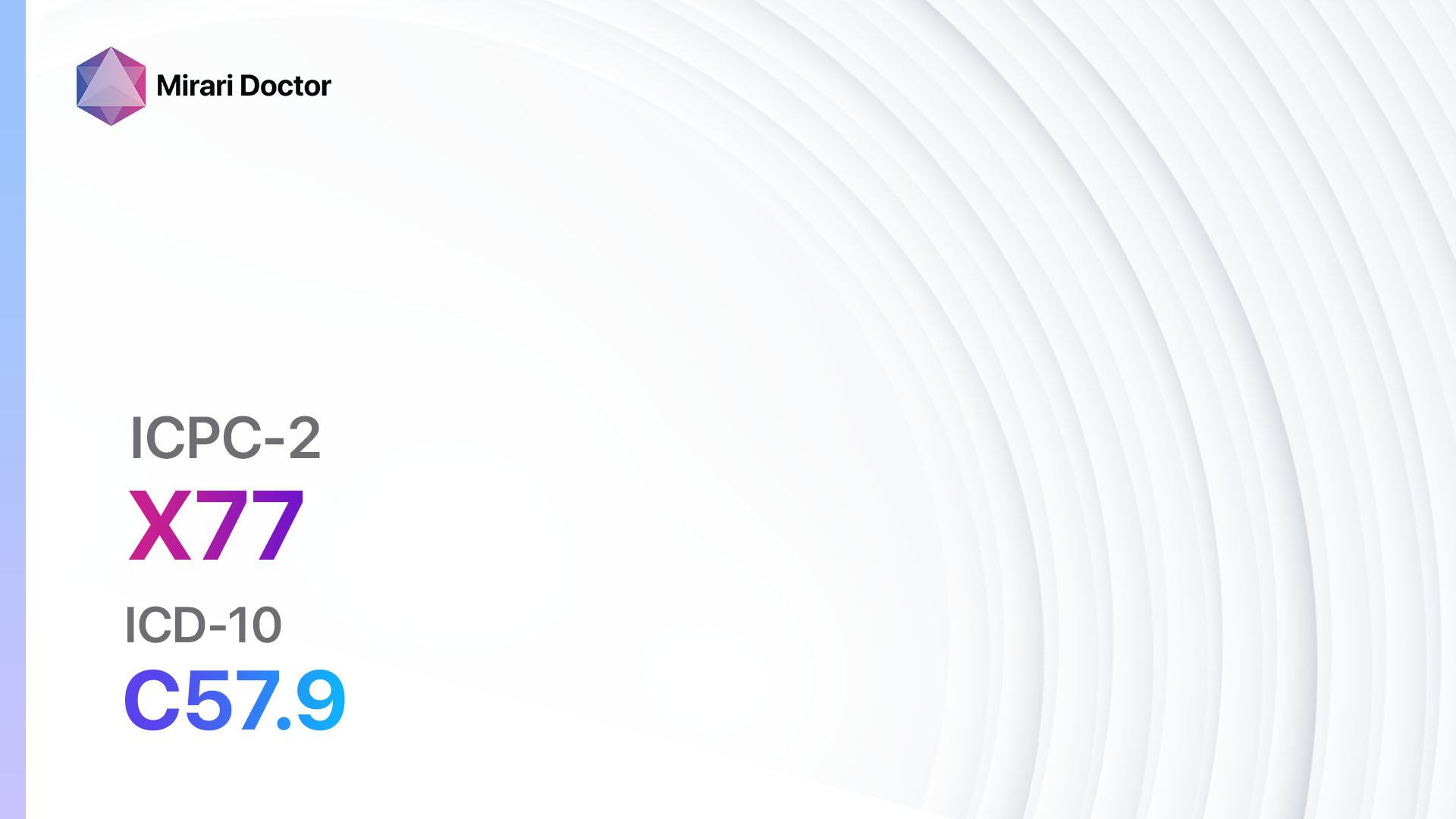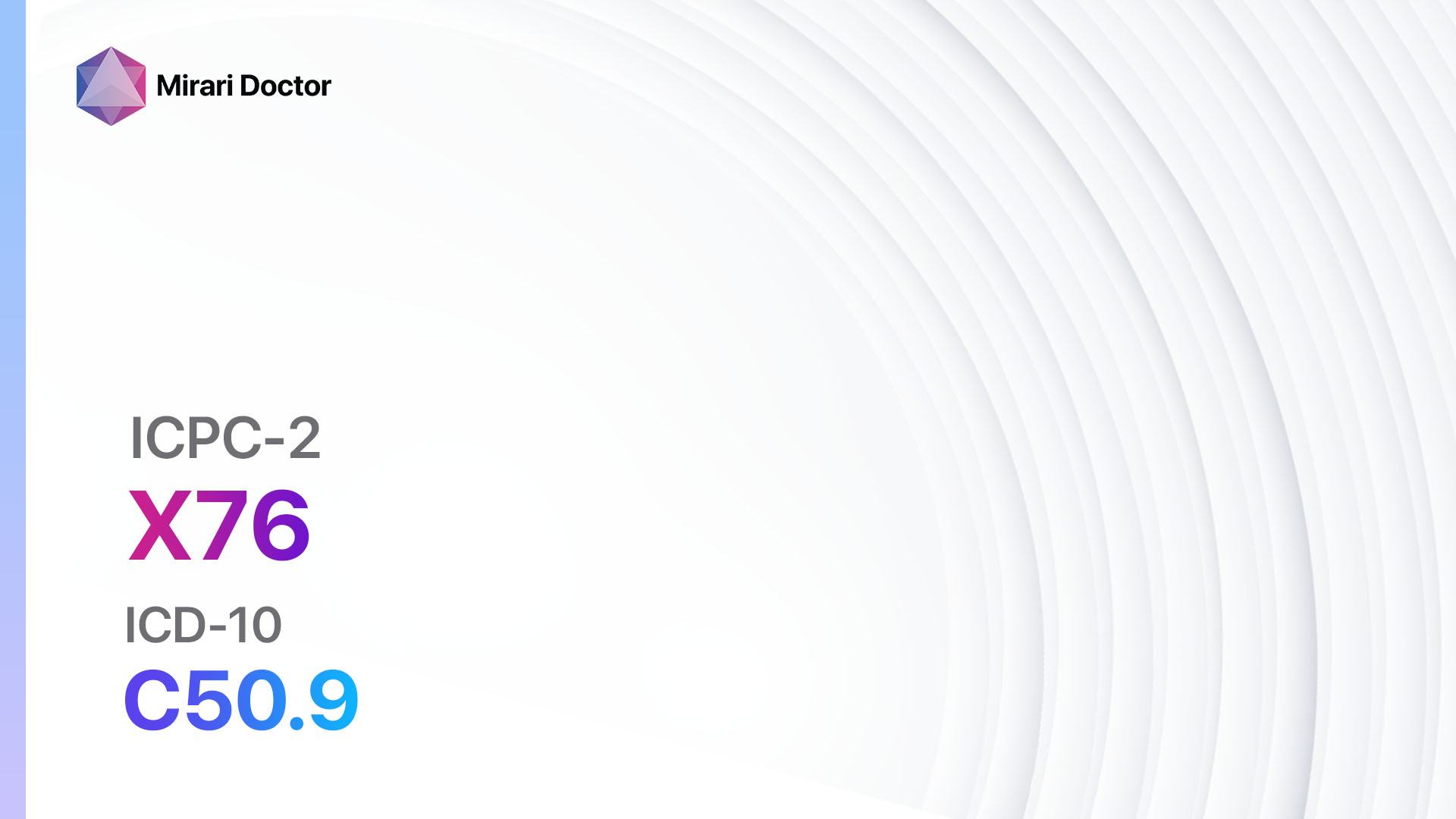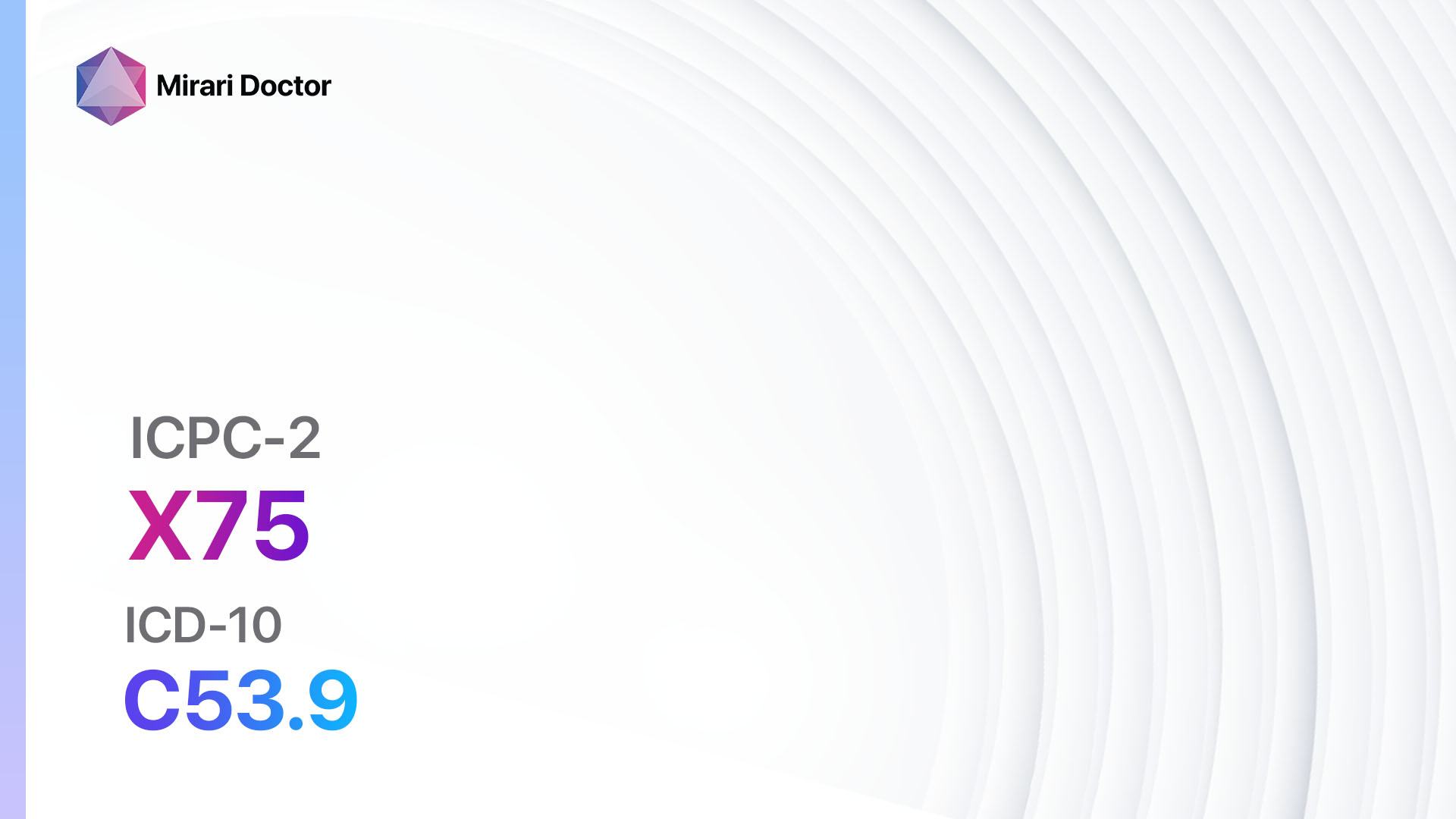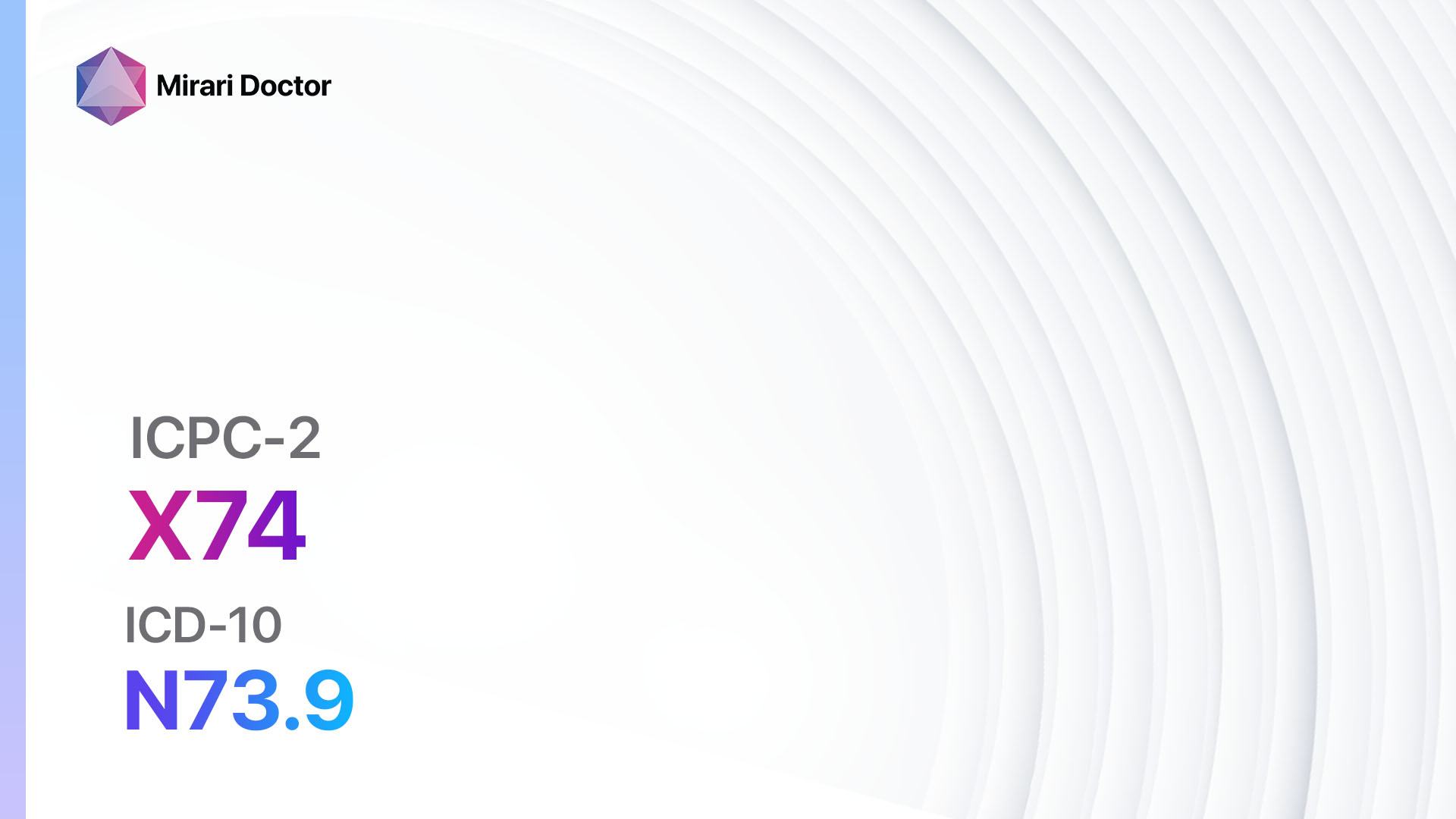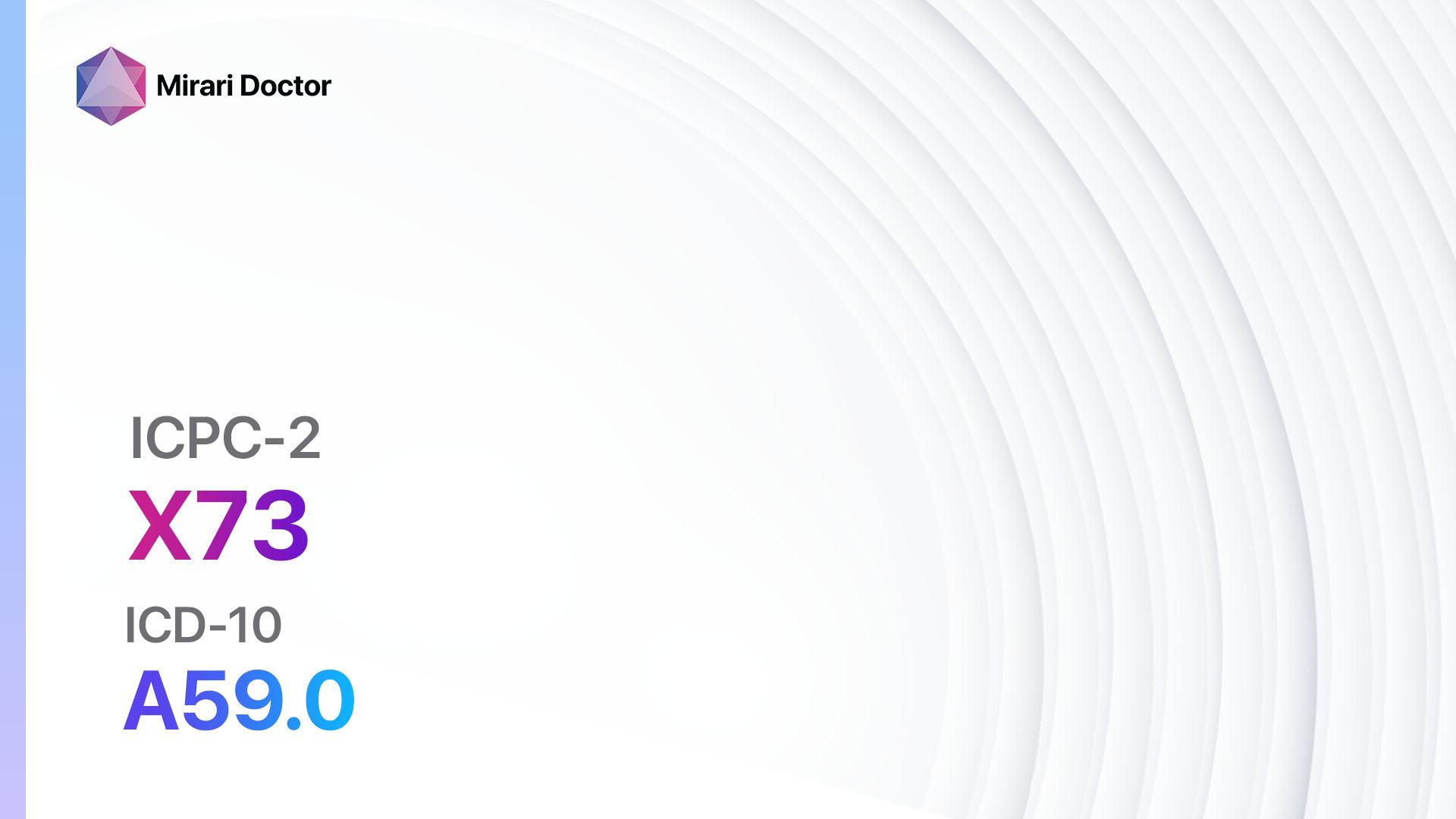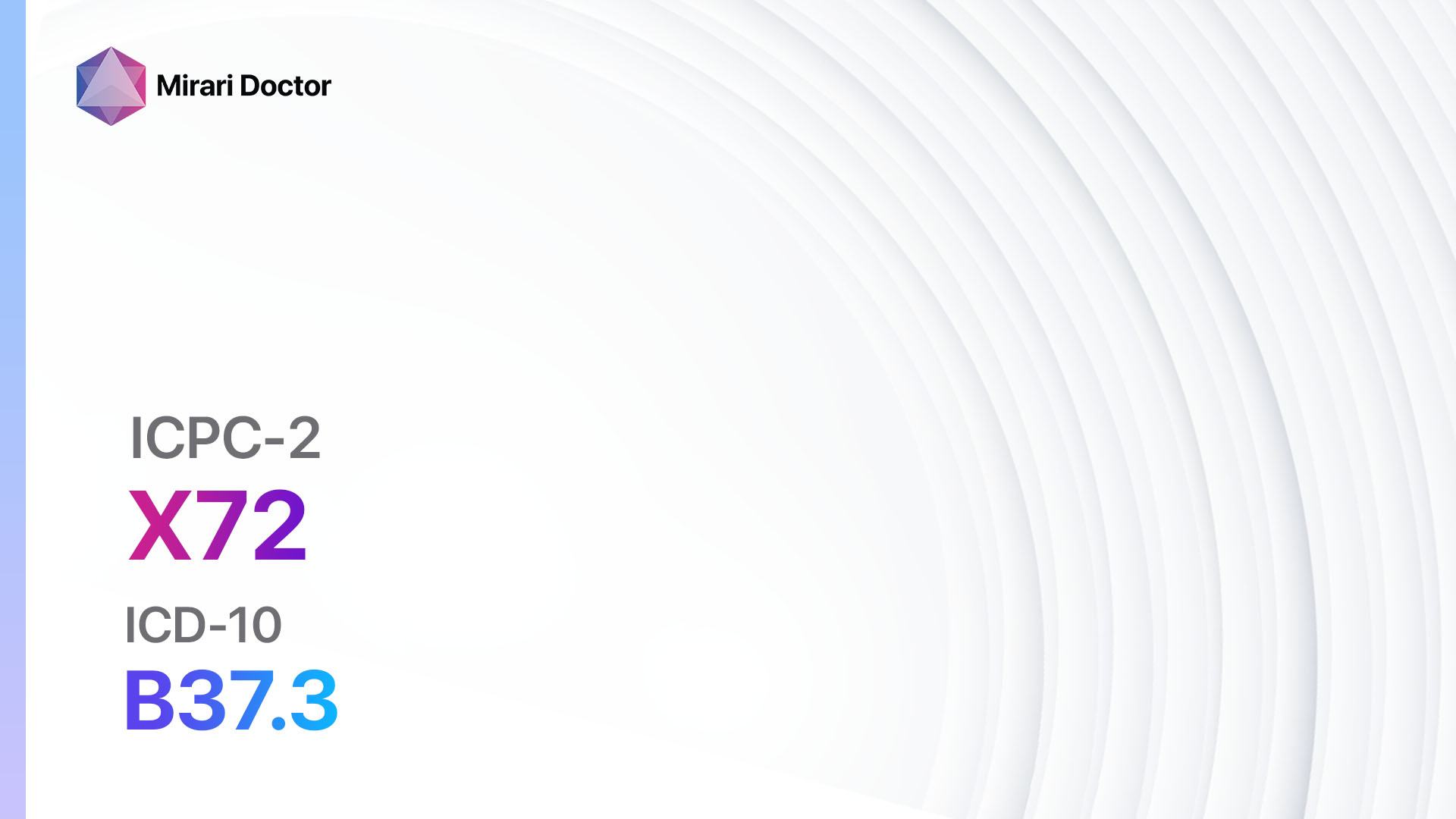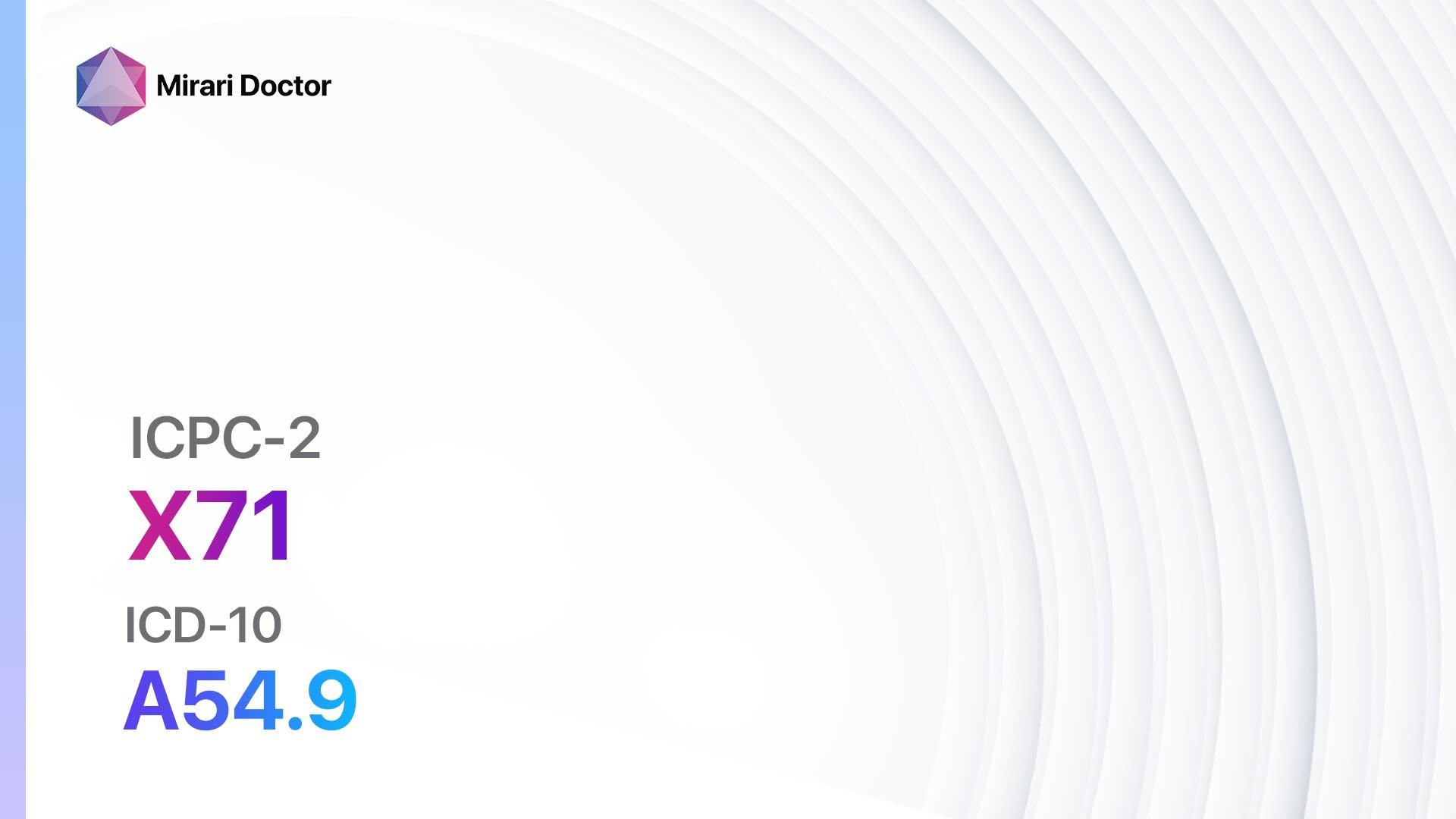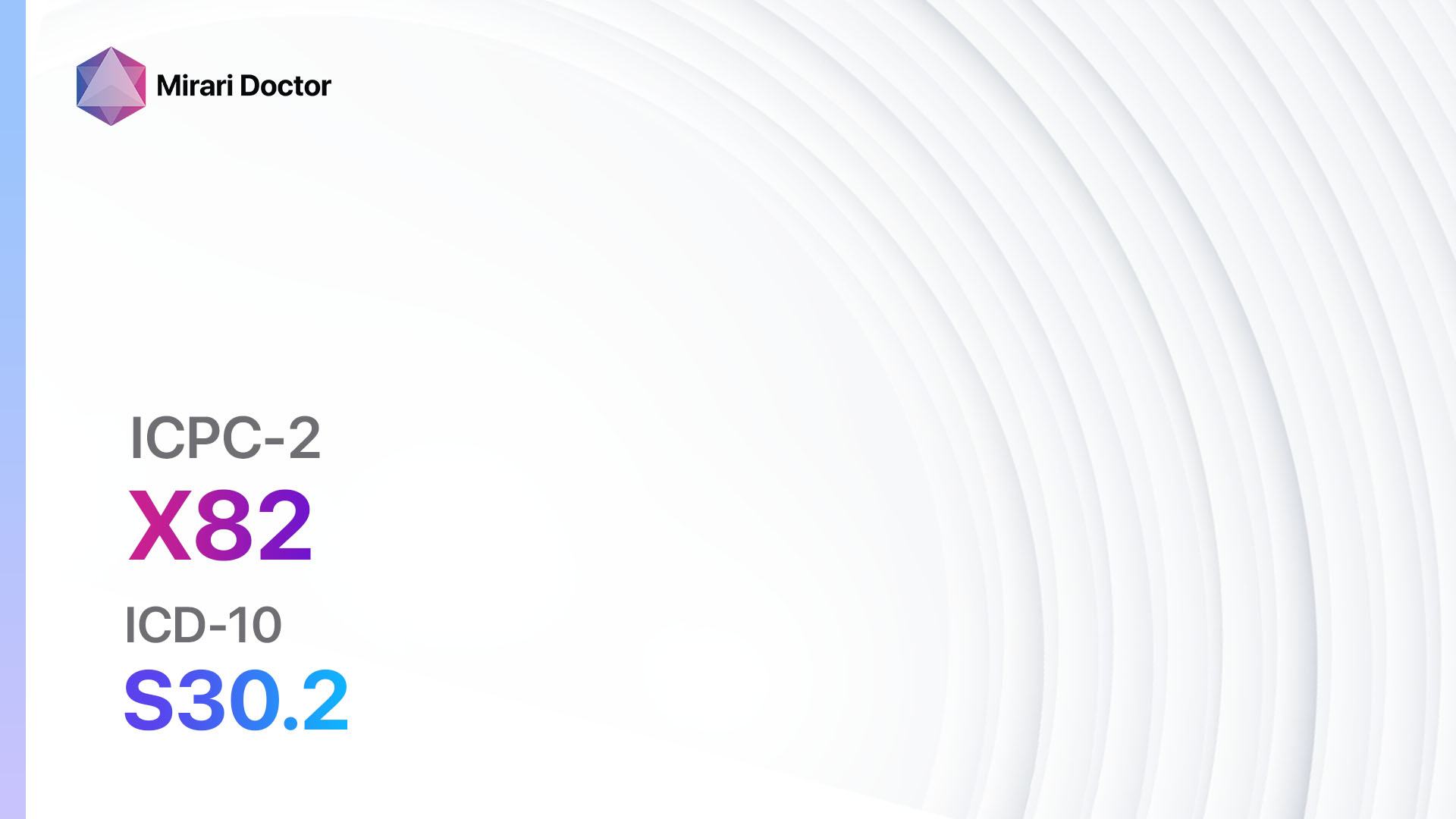
Introduction
Injury to the female genital area can occur due to various reasons, such as trauma, accidents, or sexual assault[1]. It is a significant condition that requires prompt medical attention to prevent complications and ensure proper healing[2]. This guide aims to provide a comprehensive overview of the symptoms, causes, diagnostic steps, possible interventions, and lifestyle interventions for injury to the female genital area.
Codes
- ICPC-2 Code: X82 Injury genital female
- ICD-10 Code: S30.2 Contusion of external genital organs
Symptoms
- Pain in the genital area[3]
- Swelling and bruising[4]
- Bleeding or spotting[5]
- Difficulty urinating[6]
- Painful intercourse[7]
- Abnormal discharge[8]
- Changes in menstrual cycle[9]
Causes
- Trauma or injury during sexual activity[10]
- Accidental injury or falls
- Physical assault or abuse
- Medical procedures or surgeries
- Foreign objects inserted into the genital area
Diagnostic Steps
Medical History
- Gather information about the circumstances of the injury
- Ask about any previous injuries or medical conditions related to the genital area
- Inquire about any symptoms or changes in menstrual cycle
Physical Examination
- Inspect the genital area for signs of injury, such as swelling, bruising, or lacerations
- Palpate the area to assess tenderness or abnormal masses
- Perform a speculum examination to evaluate the cervix and vaginal walls
- Check for any signs of infection or abnormal discharge
Laboratory Tests
- Complete blood count (CBC) to check for signs of infection or anemia
- Urinalysis to assess for urinary tract infection or blood in the urine
- Cultures to identify any potential bacterial or fungal infections
- Pregnancy test if applicable
Diagnostic Imaging
- Ultrasound to visualize any internal injuries or abnormalities
- X-ray or CT scan if there is suspicion of fractures or foreign objects
- MRI for a more detailed assessment of soft tissue injuries
Other Tests
- Colposcopy to examine the cervix and vaginal walls in detail
- Biopsy if there are any suspicious lesions or abnormal growths
- STD testing if there is a risk of sexually transmitted infections
Follow-up and Patient Education
- Schedule follow-up appointments to monitor healing and address any concerns
- Provide information on self-care measures, such as proper hygiene and wound care
- Educate the patient about the importance of reporting any worsening symptoms or signs of infection
- Offer resources for counseling or support groups if needed
Possible Interventions
Traditional Interventions
Medications:
Top 5 drugs for Injury genital female:
- Pain relievers (e.g., Acetaminophen, Ibuprofen):
- Cost: Generic versions can be $3-$10/month.
- Contraindications: Allergy to the medication, active stomach ulcers.
- Side effects: Upset stomach, dizziness.
- Severe side effects: Liver damage, gastrointestinal bleeding.
- Drug interactions: Blood thinners, certain antidepressants.
- Warning: Do not exceed recommended dosage.
- Topical antibiotics (e.g., Neosporin, Bacitracin):
- Cost: $5-$15 per tube.
- Contraindications: Allergy to the medication.
- Side effects: Skin irritation, allergic reactions.
- Severe side effects: Rare, but may include severe allergic reactions.
- Drug interactions: None known.
- Warning: Use as directed and avoid applying to open wounds.
- Antifungal creams (e.g., Clotrimazole, Miconazole):
- Cost: $5-$15 per tube.
- Contraindications: Allergy to the medication.
- Side effects: Skin irritation, burning sensation.
- Severe side effects: Rare, but may include severe allergic reactions.
- Drug interactions: None known.
- Warning: Use as directed and complete the full course of treatment.
- Topical steroids (e.g., Hydrocortisone):
- Cost: $5-$15 per tube.
- Contraindications: Allergy to the medication, open wounds.
- Side effects: Skin thinning, increased risk of infection.
- Severe side effects: Rare, but may include adrenal suppression.
- Drug interactions: None known.
- Warning: Use as directed and avoid prolonged use.
- Antibiotics (e.g., Amoxicillin, Cephalexin):
- Cost: Generic versions can be $10-$50/month.
- Contraindications: Allergy to the medication, certain medical conditions.
- Side effects: Upset stomach, diarrhea.
- Severe side effects: Rare, but may include severe allergic reactions or antibiotic-associated diarrhea.
- Drug interactions: Certain medications, such as oral contraceptives.
- Warning: Complete the full course of treatment and avoid unnecessary use of antibiotics.
Surgical Procedures:
- Repair of lacerations or tears: Suturing or stitching the injured area to promote healing and prevent infection. Cost: Varies depending on the extent of the injury and healthcare provider.
Alternative Interventions
- Warm sitz baths: Soaking the genital area in warm water to reduce pain and promote healing. Cost: Minimal, as it can be done at home.
- Herbal compresses: Applying herbal poultices or compresses to the injured area to reduce inflammation and promote healing. Cost: Varies depending on the herbs used.
- Aloe vera gel: Applying aloe vera gel topically to soothe the injured area and promote healing. Cost: $5-$15 per bottle.
- Pelvic floor exercises: Strengthening the pelvic floor muscles to improve blood flow and promote healing. Cost: Minimal, as it can be done at home.
- Counseling or therapy: Seeking professional help to address any emotional or psychological trauma associated with the injury. Cost: Varies depending on the healthcare provider and insurance coverage.
Lifestyle Interventions
- Rest and avoid strenuous activities to allow the body to heal properly. Cost: None.
- Maintain good hygiene by keeping the genital area clean and dry. Cost: Minimal, as it involves regular bathing and use of mild soap.
- Wear loose-fitting and breathable underwear to prevent irritation and promote healing. Cost: Varies depending on the type of underwear.
- Avoid sexual activity until the injury has healed completely. Cost: None.
- Practice stress management techniques, such as meditation or yoga, to promote overall well-being and aid in healing. Cost: Varies depending on the chosen method.
It is important to note that the cost ranges provided are approximate and may vary depending on the location and availability of the interventions. It is recommended to consult with a healthcare professional for personalized advice and treatment options.
Mirari Cold Plasma Alternative Intervention
Understanding Mirari Cold Plasma
- Safe and Non-Invasive Treatment: Mirari Cold Plasma is a safe and non-invasive treatment option for various skin conditions. It does not require incisions, minimizing the risk of scarring, bleeding, or tissue damage.
- Efficient Extraction of Foreign Bodies: Mirari Cold Plasma facilitates the removal of foreign bodies from the skin by degrading and dissociating organic matter, allowing easier access and extraction.
- Pain Reduction and Comfort: Mirari Cold Plasma has a local analgesic effect, providing pain relief during the treatment, making it more comfortable for the patient.
- Reduced Risk of Infection: Mirari Cold Plasma has antimicrobial properties, effectively killing bacteria and reducing the risk of infection.
- Accelerated Healing and Minimal Scarring: Mirari Cold Plasma stimulates wound healing and tissue regeneration, reducing healing time and minimizing the formation of scars.
Mirari Cold Plasma Prescription
Video instructions for using Mirari Cold Plasma Device – X82 Injury genital female (ICD-10:S30.2)
| Mild | Moderate | Severe |
| Mode setting: 1 (Infection) Location: 0 (Localized) Morning: 15 minutes, Evening: 15 minutes |
Mode setting: 1 (Infection) Location: 0 (Localized) Morning: 30 minutes, Lunch: 30 minutes, Evening: 30 minutes |
Mode setting: 1 (Infection) Location: 0 (Localized) Morning: 30 minutes, Lunch: 30 minutes, Evening: 30 minutes |
| Mode setting: 2 (Wound Healing) Location: 0 (Localized) Morning: 15 minutes, Evening: 15 minutes |
Mode setting: 2 (Wound Healing) Location: 0 (Localized) Morning: 30 minutes, Lunch: 30 minutes, Evening: 30 minutes |
Mode setting: 2 (Wound Healing) Location: 0 (Localized) Morning: 30 minutes, Lunch: 30 minutes, Evening: 30 minutes |
| Mode setting: 3 (Antiviral Therapy) Location: 0 (Localized) Morning: 15 minutes, Evening: 15 minutes |
Mode setting: 3 (Antiviral Therapy) Location: 0 (Localized) Morning: 30 minutes, Lunch: 30 minutes, Evening: 30 minutes |
Mode setting: 3 (Antiviral Therapy) Location: 0 (Localized) Morning: 30 minutes, Lunch: 30 minutes, Evening: 30 minutes |
| Mode setting: 7 (Immunotherapy) Location: 1 (Sacrum) Morning: 15 minutes, Evening: 15 minutes |
Mode setting: 7 (Immunotherapy) Location: 1 (Sacrum) Morning: 30 minutes, Lunch: 30 minutes, Evening: 30 minutes |
Mode setting: 7 (Immunotherapy) Location: 1 (Sacrum) Morning: 30 minutes, Lunch: 30 minutes, Evening: 30 minutes |
| Total Morning: 60 minutes approx. $10 USD, Evening: 60 minutes approx. $10 USD |
Total Morning: 120 minutes approx. $20 USD, Lunch: 120 minutes approx. $20 USD, Evening: 120 minutes approx. $20 USD, |
Total Morning: 120 minutes approx. $20 USD, Lunch: 120 minutes approx. $20 USD, Evening: 120 minutes approx. $20 USD, |
| Usual treatment for 7-60 days approx. $140 USD – $1200 USD | Usual treatment for 6-8 weeks approx. $2,520 USD – $3,360 USD |
Usual treatment for 3-6 months approx. $5,400 USD – $10,800 USD
|
 |
|
Use the Mirari Cold Plasma device to treat Injury genital female effectively.
WARNING: MIRARI COLD PLASMA IS DESIGNED FOR THE HUMAN BODY WITHOUT ANY ARTIFICIAL OR THIRD PARTY PRODUCTS. USE OF OTHER PRODUCTS IN COMBINATION WITH MIRARI COLD PLASMA MAY CAUSE UNPREDICTABLE EFFECTS, HARM OR INJURY. PLEASE CONSULT A MEDICAL PROFESSIONAL BEFORE COMBINING ANY OTHER PRODUCTS WITH USE OF MIRARI.
Step 1: Cleanse the Skin
- Start by cleaning the affected area of the skin with a gentle cleanser or mild soap and water. Gently pat the area dry with a clean towel.
Step 2: Prepare the Mirari Cold Plasma device
- Ensure that the Mirari Cold Plasma device is fully charged or has fresh batteries as per the manufacturer’s instructions. Make sure the device is clean and in good working condition.
- Switch on the Mirari device using the power button or by following the specific instructions provided with the device.
- Some Mirari devices may have adjustable settings for intensity or treatment duration. Follow the manufacturer’s instructions to select the appropriate settings based on your needs and the recommended guidelines.
Step 3: Apply the Device
- Place the Mirari device in direct contact with the affected area of the skin. Gently glide or hold the device over the skin surface, ensuring even coverage of the area experiencing.
- Slowly move the Mirari device in a circular motion or follow a specific pattern as indicated in the user manual. This helps ensure thorough treatment coverage.
Step 4: Monitor and Assess:
- Keep track of your progress and evaluate the effectiveness of the Mirari device in managing your Injury genital female. If you have any concerns or notice any adverse reactions, consult with your health care professional.
Note
This guide is for informational purposes only and should not replace the advice of a medical professional. Always consult with your healthcare provider or a qualified medical professional for personal advice, diagnosis, or treatment. Do not solely rely on the information presented here for decisions about your health. Use of this information is at your own risk. The authors of this guide, nor any associated entities or platforms, are not responsible for any potential adverse effects or outcomes based on the content.
Mirari Cold Plasma System Disclaimer
- Purpose: The Mirari Cold Plasma System is a Class 2 medical device designed for use by trained healthcare professionals. It is registered for use in Thailand and Vietnam. It is not intended for use outside of these locations.
- Informational Use: The content and information provided with the device are for educational and informational purposes only. They are not a substitute for professional medical advice or care.
- Variable Outcomes: While the device is approved for specific uses, individual outcomes can differ. We do not assert or guarantee specific medical outcomes.
- Consultation: Prior to utilizing the device or making decisions based on its content, it is essential to consult with a Certified Mirari Tele-Therapist and your medical healthcare provider regarding specific protocols.
- Liability: By using this device, users are acknowledging and accepting all potential risks. Neither the manufacturer nor the distributor will be held accountable for any adverse reactions, injuries, or damages stemming from its use.
- Geographical Availability: This device has received approval for designated purposes by the Thai and Vietnam FDA. As of now, outside of Thailand and Vietnam, the Mirari Cold Plasma System is not available for purchase or use.
References
- Santucci RA, Smith TG, Wessells H. Urotrauma: AUA guideline. J Urol. 2014;192(2):327-335.
- Zaid UB, Bayne DB, Harris CR, Alwaal A, McAninch JW, Breyer BN. Penetrating Trauma to the Ureter, Bladder, and Urethra. Curr Trauma Rep. 2015;1(2):119-124.
- Faris A, Yi Y. Trauma to the genitourinary tract. In: Kellerman RD, Rakel DP, Heidelbaugh JJ, Lee EM, eds. Conn’s Current Therapy 2023. Philadelphia, PA: Elsevier: 2023;1169-1172.
- Lang SC, Shewakramani SN. Genitourinary trauma. In: Walls RM, ed. Rosen’s Emergency Medicine: Concepts and Clinical Practice. 10th ed. Philadelphia, PA: Elsevier; 2023:chap 39.
- Taylor JM, Smith TG, Coburn M. Urologic surgery. In: Townsend CM Jr, Beauchamp RD, Evers BM, Mattox KL, eds. Sabiston Textbook of Surgery. 21st ed. St Louis, MO: Elsevier; 2022:chap 74.
- Martínez-Piñeiro L, Djakovic N, Plas E, et al. EAU Guidelines on Urethral Trauma. Eur Urol. 2010;57(5):791-803.
- Abdulcadir J, Catania L, Hindin MJ, Say L, Petignat P, Abdulcadir O. Female Genital Mutilation: A Visual Reference and Learning Tool for Health Care Professionals. Obstet Gynecol. 2016;128(5):958-963.
- Rödder K, Olianas R, Fisch M. Bladder injury. Diagnostics and treatment. Urologe A. 2005;44(8):878-882.
- Mohr AM, Pham AM, Lavery RF, Sifri Z, Bargman V, Livingston DH. Management of trauma to the male external genitalia: the usefulness of American Association for the Surgery of Trauma organ injury scales. J Urol. 2003;170(6 Pt 1):2311-2315.
- Chapple C, Andrich D, Atala A, et al. SIU/ICUD Consultation on Urethral Strictures: The management of anterior urethral stricture disease using substitution urethroplasty. Urology. 2014;83(3 Suppl):S31-47.
Related articles
Made in USA


